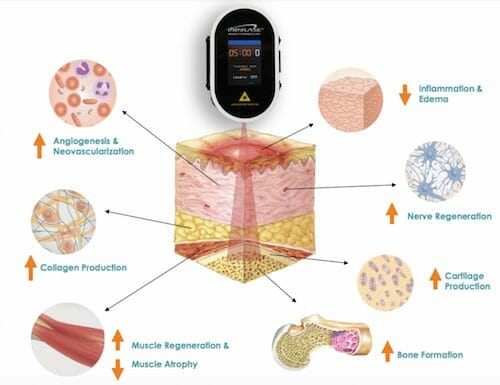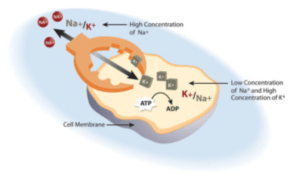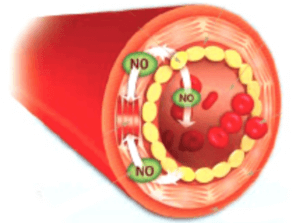Low-Level Lasers
Low-Level Lasers are precisely designed light-emitting machines that are used to treat a variety of painful conditions. The most effective treatments are for inflammatory conditions such as Plantar fasciitis, epicondylitis (elbow pain) and carpal tunnel syndrome (wrist pain) and meniscus injuries (knee pain). Low-Level Lasers have the ability to directly affect the inflamed tissues deep beneath the skin. Slowing and even stopping the inflammatory process at the source.
At the heart of many injuries is too much inflammation. Consider the advice many people receive after an injury: Rest, Ice, Compress, Elevate and take anti-inflammatory medications. All of this is designed to REDUCE inflammation. And if these inflammation reducing strategies work your body is able to recover. However, often the inflammation does not go away. Often we are left to suffer for months or years.
Laser therapy dramatically and effectively reduces inflammation deep in the tissues. Thousands of studies have been done over the past 20 years showing the benefits of using laser treatments approved by both Health Canada and the FDA. Click HERE if you are geeky like us and want a list of clinical studies. Reduced inflammation is just the start of what Low-Level Laser can do.
- Rapid Cell Growth – Accelerates cellular reproduction and growth.
- Faster Wound Healing– Stimulates fibroblasts development and accelerates collagen synthesis in damaged tissue.
- Reduced Fibrous Tissue Formation – Reduces the formation of scar tissue following tissue damage from cuts, scratches, burns, or post-surgery.
- Increased Metabolic Activity – Produced higher outputs of specific enzymes, greater oxygen and food particle loads for blood cells and thus greater production of the basic food source for cells: adenosine triphosphate (ATP).
- Increased Vascular Activity – Induced temporary vasodilation increasing blood flow to damaged areas.
- Stimulated Nerve Function – Speeds up the process of nerve cells reconnection to bring the numb areas or “dead limbs” caused by slow recovery of nerve function in damaged tissue back to life.

How Do Low-Level Lasers Work?

Low-Level Lasers Work by supplying the body with billions of photons of light as a very specific wavelength. The body absorbs this laser light on a cellular level and transforms it into chemical energy, which the body then naturally uses to repair its own tissues. The bio-stimulating effects regeneration and accelerated healing.
BUT REALLY HOW DOES IT WORK?
Low-Level Lasers activate all three known cellular pathways:

- ACCELERATES HEALING: 660 nm Adenosine Triphosphate (ATP) PAthway Increasing ATP production (Proceedings of the International Society for Optics and Photonics, 2015)
- REDUCE INFLAMMATION: 905 nm- Nitric Oxide PAthway Increases nitric oxide levels by 700% (Lasers in Surgery and Medicine, 2009)
- ELIMINATES PAIN: 905 nm- Lipid Absorption Pathway. Rebalances the Na+/ K+ pump Eliminating pain signals at the source. (Harvard Medical School, 2010)
Frequently Asked Questions
NO. you might be thinking Star Wars lasers. We use non-thermal lasers. Therefore no heat. At most a small amount of warmth.
No. A Class 3b laser is used specifically for tissue repair and does not damage cells. The precaution of wearing eye protection in enforced to prevent any chance of the laser affecting your vision. This is provincial and federal law.
YES. With a skilled and experienced practitioner, they are safe, effective and painless. We see efficacy rates in excess of 90% with the conditions mentioned in this article.
When laser light interacts with the tissue it causes certain photochemical reactions to occur and stimulate natural biological healing processes, thus transforming light into chemical energy.
Treatment time will vary from as little as 1 minute to as long as 20 minutes per session, depending on the condition treated and its severity.
BACK TO: Chiropractic Vancouver

